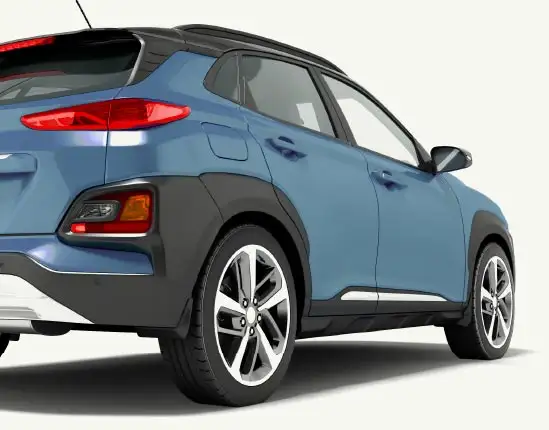Recent Blog Articles

List of blog articles on our auto buying marketplace
Thinking about financing an electric vehicle? Learn how EV buying trends impact loan options, rates, and practical decisions so you can save big and feel confident navigating your car purchase.
Auto Loan Financing in 2025 By Dale PetersonWhile loans make it feasible to buy a car, some people end up paying much more than necessary due to unfavorable financing terms.
See It, Love It, Drive It: Financing Your Dream Car After the Auto Show By Staci BaileyAuto shows spark car buying dreams, but how do you turn admiration into ownership? Discover tips for financing new cars, trucks, and SUVs and how myAutoloan streamlines the journey.
Smart Options for Budget-Conscious Buyers By Dale PetersonWhile many buyers used to look to the used car market as a place to find reliable transportation for less, the prices of many popular models are now close to - or even above - their new car equivalents.
Car Loan Shopping: Get Offers, Not Overwhelmed By Greg ThibodeauChoosing the right car loan can save you a bundle. See how comparing offers, knowing your credit, and using smart tools at myAutoloan can make buying—or refinancing—a car easier, even if your finances are unique.
Explore Some of the Oldest Roads in the US By Greg ThibodeauDiscover the charm and history of America's oldest roads on your next road trip. From the iconic Route 66 to the historic Boston Post Road, embark on a journey through time and explore the rich heritage of these historic routes.
Motorcycle Financing: 10 Things to Know in 2025 By Greg ThibodeauDiscover the 10 key things to know about motorcycle financing in 2025. Get tips on securing the best deal and exploring diverse financing options.
Best Time to Refinance By Dale PetersonRefinancing a car or truck can be a savvy financial move, potentially saving you money over the life of your loan.
Financing an Auto Loan By Dale PetersonOne of the standout features of myAutoloan is its streamlined application process.
Advantages of Online Auto Financing By Dale PetersonLet's explore the benefits of securing a car loan through an online lending platform and how it can streamline the car buying process for consumers.
Does Your Auto Insurance Cover A Rental Car? By Moses MwangiWhile your auto insurance policy might be enough, you might want to purchase supplemental liability insurance if you don't have your own policy.
15 Fun Facts Every Motorcycle Rider Should Know By Moses MwangiMotorcycle culture is as diverse as the riders who embrace it. Today, motorcycles inspire innovation, ignite passion, and bring people together from all walks of life.
Who Is at Fault in a Sideswipe Accident? By Susan MelonyBeing in a sideswipe accident is irritating, and unfortunately, not all sideswipe accidents are minor.
How to Transfer Car Ownership After Death By Moses MwangiDealing with the legalities of transferring car ownership after the death of a loved one is a complex and emotionally challenging process. However, it is necessary whether you want to keep or sell the car.
A Guide to Buying a Trailer: Everything You Need to Know By Moses MwangiWhether for a family holiday or bucket list dreams, trailering allows you to explore and experience amazing American landscapes with a life on the road on your terms.
30/60/90K Car Maintenance: Everything You Need to Know By Moses MwangiMost vehicle manufacturers recommend a specific maintenance schedule based on the car's mileage and age to maintain optimal performance.
Can You Use a Credit Card for a Car Down Payment? By Maggie LysterWhen purchasing a car, one of the first financial hurdles is the down payment. Many buyers wonder if they can use a credit card for this upfront cost, either to earn rewards, delay cash outflow, or manage their finances more flexibly.
The Top Features to Look for When Buying a Luxury Car By Arthur BrownLuxury cars represent more than just a means of transportation—they embody status, advanced technology, superior craftsmanship, and an unparalleled driving experience.
Top Tips for Shipping Your Car Safely By Arthur BrownUnderstanding how to ship a vehicle can alleviate many concerns. Whether you are relocating, purchasing a car from another state, or sending a vehicle to a loved one, the safety of your car during transit should be your priority.
Top 10 Must-Have Polaris Ranger Accessories for the Ultimate Off-Road Experience By Simon AmbrosIf you’ve been racking your brain about how to maximize performance, comfort, or sheer fun during your off-road adventures, this article will tell you how.
How to Decide Between Fixing Your Car and Buying New By Arthur BrownCar owners often face the daunting question of whether to repair their current vehicle or invest in a new one. This decision can be overwhelming, especially when balancing financial implications.
How to Make it Easier to Pay Back Your Loan and Insurance at the Same Time By Roy CohenIf you want to know how to put a few hundred dollars back into your pocket each month, here are some financial strategies that can help you pay your insurance and your car loan without compromising on either of them.
Understanding Truck Accidents & Various Ways of Protecting Yourself By Arthur BrownTruck accidents, often caused by driver fatigue and mechanical failures, pose significant risks due to the size and weight of the vehicles.
Purchasing a New Car: 6 Practical Suggestions Worth Considering By Arthur BrownBuying a new car is exciting but requires careful planning. By considering your budget, needs, and options, you can make an informed choice that ensures lasting satisfaction.
Everything You Need To Know About Private Party Auto Loans By Henry GarrisonBuying a car from a private seller can often be more cost-effective than purchasing from a dealership, but it also presents its own set of challenges. A private party auto loan offers a financing option that helps simplify and make these transactions more accessible.